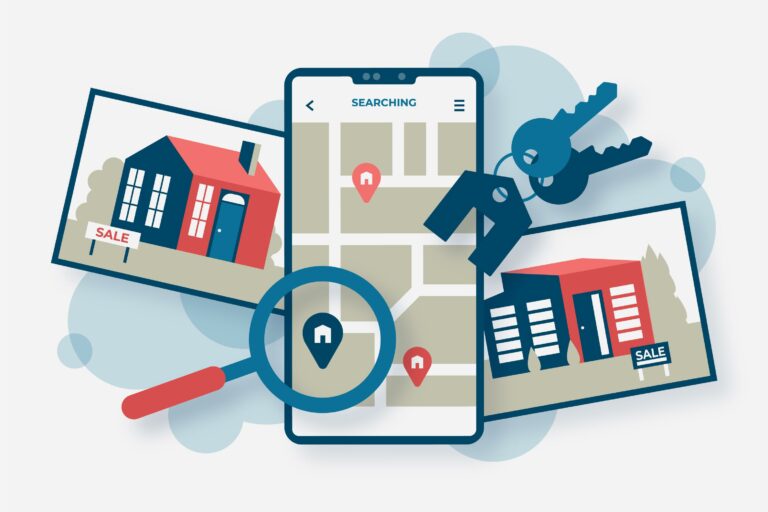How to Evaluate AI Tools and Software for Your Business Needs
Navigating the complex world of AI tools and software can be a challenging endeavor for businesses. Yet, making an informed choice is critical to reaping the benefits AI offers. This comprehensive guide will lead you through the process of evaluating AI tools for your business needs. We’ll delve into understanding your business challenges, explore the different types of AI tools, discuss crucial features to consider, and look at how to assess an AI tool’s performance. We’ll also shed light on the financial aspect, scrutinize vendor reputation, and guide you on conducting a pilot test. Finally, we’ll help you make that all-important decision of integrating the right AI tool into your workflow. This step-by-step guide aims to equip you with the knowledge to harness the power of AI effectively for your business.
I. Introduction
A. Understanding AI Tools and Software
Welcome to the dynamic world of Artificial Intelligence. As technology evolves at a breakneck pace, we’re constantly introduced to tools and software that can perform tasks we never thought possible a few years ago. AI tools and software are examples of these technological wonders, capable of automating repetitive tasks, analyzing complex data, predicting future trends, or even interacting with users in a way that feels almost human.
They vary from simple solutions, such as chatbots that can handle customer queries, to more complex systems that can analyze and draw insights from massive amounts of data. Think of these tools as digital assistants that can work tirelessly, learning from their mistakes, and constantly improving their performance.
B. Importance of Evaluating AI Solutions
Now that we know what AI tools and software are, it’s essential to understand why it’s crucial to evaluate these solutions before integrating them into your business. Simply put, not all AI tools are created equal. Each comes with its own set of features, capabilities, and limitations. What works for one company might not necessarily work for yours.
Evaluating AI solutions is much like shopping for a new car. You wouldn’t purchase the first vehicle you see. You’d want to look under the hood, understand the car’s capabilities, consider its fuel efficiency, test drive it, and finally consider if it fits your budget.
The same principles apply when choosing an AI solution. To find the right fit for your business needs, it’s vital to assess the tool’s capabilities, understand how it works, consider the costs, and evaluate its potential return on investment (ROI). This article will guide you through the process of evaluating AI tools and software to ensure you’re making an informed decision that could potentially transform your business operations.
II. Determining Your Business Needs
A. Identify Your Business Challenges
Every business, no matter how successful, faces challenges. It could be anything from workflow inefficiencies, a lack of valuable customer insights, overworked employees, or high operational costs. The first step in your AI evaluation journey is to pinpoint the specific issues that are holding your business back.
Start by asking probing questions: Are tasks taking longer than necessary because they’re performed manually? Is there a significant number of errors due to human oversight? Are your customer service representatives overwhelmed with queries? Do you lack the tools to extract actionable insights from your customer data?
By identifying the specific pain points in your organization, you not only gain a clearer perspective of where improvements are needed but also establish a basis for what you want your chosen AI solution to solve. Remember, the primary aim of implementing AI tools and software is to help overcome these challenges and streamline your business operations.
B. Establish Your Goals and Objectives
Once you’ve identified your business challenges, the next step is to define clear goals and objectives. Ask yourself: What do you hope to achieve by implementing AI in your business operations?
Your objectives could range from enhancing productivity, improving service quality, reducing errors, increasing profitability, or gaining a competitive edge. When setting these goals, ensure they’re specific, measurable, achievable, relevant, and time-bound (SMART).
For instance, instead of stating a broad goal like “improve customer service,” be more specific: “Reduce customer response time by 50% within the next six months using an AI chatbot.” Having these detailed goals will provide a clear direction and allow you to measure the success or failure of the AI tool you decide to implement.
Remember, the ultimate goal is to find an AI tool or software that aligns with your specific business needs, adds value to your operations, and helps you achieve your defined objectives.
III. Understanding Different Types of AI Tools
A. AI for Data Analysis
In our data-driven business landscape, the ability to efficiently analyze and interpret large volumes of data is crucial for making informed decisions. AI for data analysis, also referred to as AI analytics, can help businesses derive meaningful insights from their data.
AI analytics tools employ machine learning algorithms to analyze patterns, predict future trends, and provide actionable insights. For instance, an e-commerce store could use AI analytics to analyze customer buying behaviors, enabling them to anticipate future demands and optimize their inventory accordingly. When evaluating an AI tool for data analysis, consider the volume and type of data you deal with and how the tool can help you unlock insights from this data.
B. AI for Automation
AI for automation refers to tools that streamline repetitive and mundane tasks, freeing up employees to focus on more strategic and creative aspects of the business. AI-powered automation tools range from Robotic Process Automation (RPA) systems, which can automate routine tasks, to AI chatbots that can handle customer inquiries around the clock.
When evaluating AI for automation, consider what routine tasks are taking up significant chunks of your employees’ time. It could be anything from data entry to scheduling meetings. The right AI automation tool will not only automate these tasks but also reduce errors and improve productivity.
C. AI for Customer Service
Customer service is a critical aspect of any business, and AI tools can significantly enhance this area. AI-powered chatbots and virtual assistants can provide 24/7 support to customers, answering their questions instantly and accurately. They can also help in gathering customer data for further analysis.
When evaluating these tools, consider their language processing capabilities, their ability to learn from customer interactions, and the quality of their responses. Remember, the aim is to improve the customer experience, not frustrate your clients with inaccurate or generic responses.
D. AI for Sales and Marketing
AI tools can revolutionize your sales and marketing strategies. They can help in customer segmentation, predictive analytics, personalizing customer interactions, and even forecasting sales. AI can analyze customer data to identify buying behaviors and patterns, enabling you to tailor your marketing campaigns accordingly.
When evaluating AI tools for sales and marketing, consider their ability to integrate with your current marketing platforms, the quality of insights they provide, and how they can help you enhance your customer relationships. Ultimately, the right AI tool should empower your marketing and sales teams to work smarter, not harder.
IV. Key Features to Look for in AI Tools
A. User-Friendliness
When evaluating AI tools, the user-friendliness of the platform is a critical consideration. A user-friendly interface reduces the learning curve and makes it easier for your team to adopt the tool. An AI solution might be packed with powerful features, but if it’s not easy to use, it can become a stumbling block rather than a stepping stone. Look for tools with intuitive design, clear navigation, and simple workflows. In addition, availability of training resources and responsive customer support are important facets of user-friendliness.
B. Scalability
Your business needs and goals will evolve over time, and so will the volume of data you have to handle. A scalable AI tool will grow with your business, accommodating larger data sets and more complex functionalities as needed. When evaluating an AI tool, consider its capacity to handle increased demand, how well it can manage larger data volumes, and whether it offers more advanced features you can unlock as your business grows.
C. Integration with Existing Systems
Integration capability is another key feature to consider. The AI tool you choose should be able to seamlessly connect with your existing business systems—like your CRM, ERP, or marketing automation software. This will allow for smoother workflows, as data can be easily shared between systems, eliminating the need for manual data entry and reducing the risk of errors.
D. Security Features
In the era of cyber threats and data breaches, security is paramount. The AI tool you select should have robust security measures in place to protect your business and customer data. Look for features like data encryption, user authentication, access controls, and compliance with relevant industry standards and regulations. Also, the provider should have a clear policy detailing how they handle and protect your data.
E. Customization Capabilities
Every business is unique, and a one-size-fits-all approach may not always be the best solution. An AI tool that offers customization capabilities can be tailored to meet your specific business needs. Whether it’s customizing the dashboard view, creating bespoke reports, or tweaking the algorithm, the ability to make the tool your own can be a significant advantage. This customization can help you achieve better results and ensure the tool fits seamlessly into your operations.
V. Assessing the Performance of AI Tools
A. Accuracy and Efficiency
When selecting an AI tool for your business, assessing its accuracy and efficiency is paramount. The tool should provide precise, reliable results and do so in a timely manner. Consider how well the tool performs in real-world scenarios. Does it produce accurate outputs consistently? How quickly does it analyze data and generate insights? High-performance AI tools should be able to handle large volumes of data, process them efficiently, and deliver accurate results.
B. Real-time Capabilities
In today’s fast-paced business environment, real-time analysis and decision-making are crucial. AI tools that provide real-time capabilities enable you to make data-driven decisions instantly. This feature is particularly important in areas such as customer service and sales where immediate response can make the difference between winning and losing a customer. Check if the AI tool can analyze data in real-time and offer instant insights, enabling you to act swiftly and effectively.
C. The Ability to Learn and Adapt
One of the defining features of AI is its ability to learn from experience and adapt over time. This is often referred to as machine learning. AI tools with this capability can continuously improve their performance based on the data they process and feedback they receive. For example, an AI customer service tool may learn from each interaction to improve future responses. When evaluating an AI tool, consider how well it learns and adapts to improve its accuracy, efficiency, and overall performance over time.
VI. Consideration of Costs
A. Understanding Pricing Models
Before integrating any AI tool into your business workflow, it’s essential to understand its pricing model. AI tools can follow various pricing structures, such as subscription-based models, usage-based models, or a combination of both. It’s crucial to thoroughly understand what is included in the price, if there are additional costs for premium features or add-ons, and how the pricing may change as your business grows and needs evolve. Also, remember to consider costs associated with training your staff to use the new tool effectively.
B. Calculating ROI
To determine the financial viability of an AI tool, calculating its return on investment (ROI) is a must. Begin by identifying the specific benefits the tool will bring. These could be in terms of increased sales, improved efficiency, reduced labor costs, or enhanced customer satisfaction. Then, quantify these benefits in monetary terms over a defined period. Compare this to the total costs of the AI tool (including purchase, implementation, and ongoing costs) to determine the ROI. A positive ROI indicates that the benefits outweigh the costs and the investment is worthwhile.
C. Considering Long-term Value vs. Immediate Costs
While the initial cost of an AI tool can be significant, it’s crucial to weigh these immediate expenses against the long-term value it provides. High-quality AI tools can drive substantial value over time through increased efficiency, improved decision-making, and enhanced customer experience. When evaluating the cost of an AI tool, consider not only the upfront price tag but also the long-term benefits it will bring to your business. Remember, an investment in AI is an investment in the future of your business.
VII. Checking Vendor Reputation and Support
A. Vendor’s Expertise and Reputation
In the age of AI, the reputation and expertise of your software vendor are critical. Does the vendor have a solid track record in providing effective AI solutions? What is their standing in the industry? How have they helped businesses similar to yours? Evaluating the vendor’s expertise, previous work, industry recognition, and awards can provide valuable insights into the quality of their AI tools and their capability to support your business needs.
B. Customer Reviews and Feedback
In addition to the vendor’s reputation, also consider the experiences of other businesses that have used the AI tool you’re considering. Look for customer reviews and testimonials to gain insights into the tool’s strengths and weaknesses. Pay attention to feedback about its performance, reliability, and ease of use. Reviews can also give you an idea of the potential challenges you might face and how the vendor responds to customer issues.
C. Post-Purchase Support and Services
AI tools are complex, and it’s essential to have a reliable support system in place. Check what kind of post-purchase support the vendor offers. This could include technical support, training resources, and ongoing maintenance services. Ask about their response time, availability, and whether support is included in the cost or requires an additional fee. Also, find out about the vendor’s update policy – how frequently do they update their software, and will you automatically receive updates or need to purchase them separately? Adequate support can make the difference between a successful integration of AI in your business and a costly, unproductive investment.
VIII. Running a Pilot Test
A. Implementing a Trial Period
Before fully committing to an AI tool, it’s recommended to implement a trial period, also known as a pilot test. This is a limited implementation of the tool that allows you to see how it performs in your specific business context without fully committing. Many vendors offer free trials or demo versions of their tools, which can provide you with valuable hands-on experience. During the trial period, you can test the tool’s functionality, assess how well it integrates with your current systems, and see if it delivers on its promises. It’s also an excellent opportunity to evaluate how user-friendly the tool is and how your team reacts to it.
B. Evaluating the Results
After the trial period, take the time to evaluate the results. Did the tool perform as expected? Did it help you solve your business challenges and meet your objectives? Were there any issues or limitations that you weren’t aware of before? Evaluate how well the tool met your needs and whether it provided value.
Keep in mind that it may take some time to fully understand the impact of an AI tool, especially when it comes to more complex applications like data analysis. However, even a short trial period can give you valuable insights into the tool’s potential. Don’t forget to also consider feedback from your team – they are the ones who will be using the tool, and their opinion is critical.
IX. Making the Final Decision
A. Weighing Pros and Cons
By this stage, you would have accumulated a wealth of information about the AI tool, its features, performance, cost-effectiveness, and its suitability to your business needs. It’s time to weigh the pros and cons. Review the goals and objectives you identified at the beginning of this process. Does the tool meet these needs?
Consider the strengths and weaknesses of the tool. Perhaps it excels in user-friendliness but lacks in scalability. Maybe it offers excellent real-time capabilities but falls short in the ability to learn and adapt. The key here is to understand what trade-offs you’re willing to make.
Take into account all the direct and indirect costs, and consider how they stack up against the benefits. Are the long-term benefits worth the initial investment? Also, factor in the vendor’s reputation and the quality of their customer support. Remember, choosing an AI tool is not just a one-time purchase but a long-term partnership with the vendor.
B. Taking the Leap – Making the Purchase Decision
Once you’ve weighed all the pros and cons, it’s time to make the final decision. Remember, no tool will be perfect, but the goal is to find an AI solution that best meets your business needs and offers the most value.
Make sure you’ve considered all aspects – business needs, types of AI tools, key features, performance, cost, vendor reputation, and the results from the pilot test. It’s a comprehensive evaluation, but it’s necessary to ensure you’re making an informed decision.
When you’re ready, take the leap. Make the purchase decision with confidence, knowing that you’ve done the due diligence. Remember, this is the start of your journey with AI – a decision that can transform your business operations and open up new opportunities. Congratulations on taking this crucial step in integrating AI into your workflow. The future is here, and it’s powered by artificial intelligence.
X. Conclusion
A. Recap and Key Takeaways
In conclusion, choosing the right AI tool for your business is not a task to be taken lightly. It requires a clear understanding of your business needs, a thorough evaluation of the tool’s features and performance, a careful consideration of costs, a rigorous check of the vendor’s reputation and support, and a successful pilot test before making the final decision.
Throughout this process, remember these key takeaways:
- Always start with your business needs. Identifying your challenges and goals will help guide your AI tool selection process.
- Understand the different types of AI tools and what they can offer your business.
- Look for key features that matter to your business – user-friendliness, scalability, integration with existing systems, security features, and customization capabilities.
- Evaluate the performance of the AI tool in terms of accuracy, efficiency, real-time capabilities, and the ability to learn and adapt.
- Consider both the immediate and long-term costs. Understanding the pricing model and calculating the ROI will ensure you’re making a cost-effective decision.
- Check the vendor’s reputation, customer reviews, and post-purchase support. You’re not just buying a tool; you’re partnering with a vendor.
- Conduct a pilot test to see how the tool performs in a real-world business setting. The results will provide valuable insights for your final decision.
B. Final Thoughts
As we stand on the brink of a new era where AI permeates every aspect of our business and personal lives, it’s important to approach AI tools and software with both excitement and caution. These tools have the potential to significantly enhance your business operations, but their success will largely depend on your ability to select the right tool that aligns with your business needs and objectives.
Remember, integrating AI into your business is not an end in itself, but a means to achieving greater efficiency, accuracy, and profitability. With careful evaluation and strategic planning, you can harness the power of AI to propel your business into the future.
Thank you for joining us on this journey to understanding how to evaluate AI tools and software for your business needs. As you embark on your AI journey, we wish you every success in harnessing the power of AI to drive your business growth.







